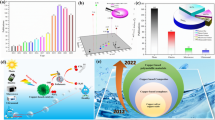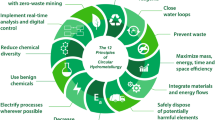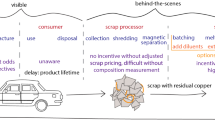Abstract
Ball mills are utilized as mechanochemical (MC) dehalogenation reactors for defined reductive dehalogenations of various hazardous polyhalogenated pollutants such as polychlorinated biphenyls (PCBs) or pentachlorophenol (PCP) to their parent hydrocarbons in high yields, i.e., biphenyl and phenol, respectively. This versatile technique, designated as “Dehalogenation By Mechanochemical Reaction” (DMCR), can be preferentially deployed for novel approaches regarding hazardous waste management and destruction: contaminated materials as well as highly concentrated or pure contaminants and their mixtures are treatable at room temperature in a short time, virtually regardless of their state. For instance, PCBs in contaminated soils, filter dusts, transformer oils, or as pure substances are dechlorinated to harmless chloride and their parent hydrocarbon biphenyl by applying magnesium, aluminum or sodium metal plus a low acidic hydrogen source (ether, alcohol, amine etc.). DMCR offers several economic and ecological benefits: ball milling requires a low energy input only. Because of the strikingly benign reaction conditions, toxic compounds can be converted to defined and usable products. Furthermore, detoxified materials like transformer oils can be readily recycled, and DMCR facilitates the re-use of scrap metals. No harmful emissions to the environment have to be expected. This paper presents selected results of basic laboratory studies demonstrating the versatility, efficiency and limits of DMCR.
Similar content being viewed by others
References
M. Aresta, A. Dibenedetto and T. Pastore, in Proceedings of the CONSOIL 2003 Conference (8th International FZK/TNO Conference on Contaminated Soil), Gent, Belgium, 12–16 May 2003 (Computer Optical Disk ISSN: 0947–8620).
S. A. Rowlands, A. K. Hall, P. G. Mccormick, R. Street, R. J. Hart, G. F. Ebell and P. Donecker, Nature { vn367} (1994) 223.
P. Donecker, P. G. Mccormick, R. Street and S. A. Rowlands, PCT WO94/14503 (1994).
A. K. Hall, J. M. Harrowfield, R. J. Hart and P. G. Mccormick, Environ. Sci. Technol. { vn30} (1996) 3401.
S. Loiselle, M. Branca, G. Mulas and G. Cocco, ibid. 31 (1997) 261.
E. Gock, M. OPel and J. Mayer, Organohalogen Comp. { vn54} (2001) 185.
T. Ikoma, Q. Zhang, F. Saito, K. Akiyama, S. Tero-Kubota and T. Kato, Bull. Chem. Soc. Jpn. { vn74} (2001) 2303.
V. Birke, TerraTech { vn5} (1998) 52.
Idem., in Proceedings of the Third International Conference on Remediation of Chlorinated and Recalcitrant Compounds, edited by A. R. Gavaskar and A. S. C. Chen (Monterey, USA, May 2002) (Battelle Press, Columbus, USA, Computer Optical Disk, ISBN 1–57477–132–9).
V. Birke, J. Mattik, D. Runne, H. Benning and D. Zlatovic, in Proceedings of the CONSOIL 2003 Conference (8th International FZK/TNO Conference on Contaminated Soil), Gent, Belgium, 12–16 May 2003 (Computer Optical Disk ISSN: 0947–8620).
G. Heinicke, “Tribochemistry” (Akademie-Verlag, Berlin, 1984).
Tribochem, Web site http://www.tribochem.de.
J. Hawari, J. Organomet. Chem. { vn437} (1996) 91.
J. G. Smith and I. Ho, J. Org. Chem. { vn38} (1973) 3601.
Author information
Authors and Affiliations
Corresponding author
Rights and permissions
About this article
Cite this article
Birke, V., Mattik, J. & Runne, D. Mechanochemical reductive dehalogenation of hazardous polyhalogenated contaminants. Journal of Materials Science 39, 5111–5116 (2004). https://doi.org/10.1023/B:JMSC.0000039192.61817.dd
Issue Date:
DOI: https://doi.org/10.1023/B:JMSC.0000039192.61817.dd




